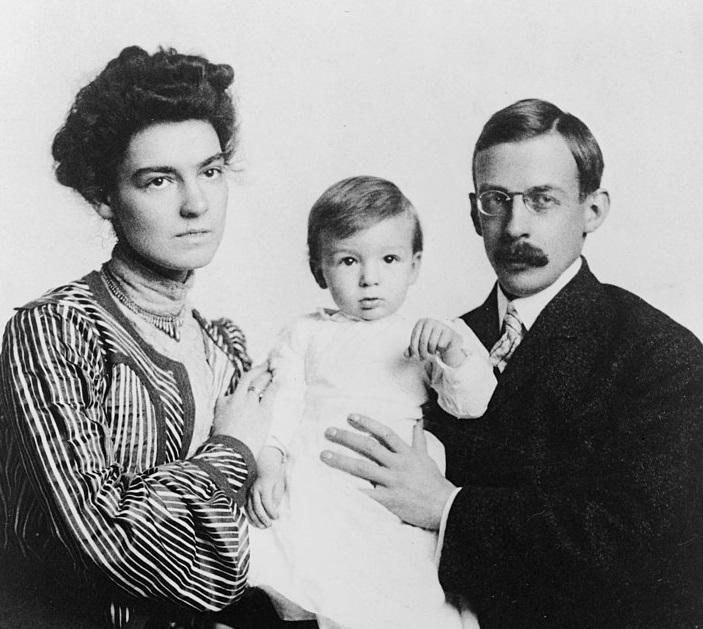Elsie May Bell Grosvenor was a woman of many accomplishments, known for her travels and expeditions alongside her husband, Gilbert Hovey Grosvenor, the first editor of National Geographic Magazine. She was born on May 8, 1878 in London, England, to Alexander Graham Bell, the inventor of the telephone, and Mabel Gardiner Hubbard. Her parents were in London on an extended visit at the time, during which Dr. Bell demonstrated his novel device to Queen Victoria.
Elsie May made her first trans-Atlantic crossing when the Bells returned to the United States. She was shipwrecked with her family aboard a steamer that ran aground off Newfoundland, and by the time of her marriage, she had a dozen ocean crossings to her credit. She studied in France and Italy, and traveled in England and Norway. In Japan, in 1898, she was presented to the Empress.
In 1900, Elsie May married Gilbert Grosvenor, a young man who had been born in Constantinople, where his father, Dr. Edwin A. Grosvenor was a professor of history at Robert College. The couple’s marriage marked the beginning of more travels and studies that would earn them the nickname “Mr. and Mrs. Geography.” Young Mr. Grosvenor had recently become editor of the National Geographic magazine, journal of National Geographic Society, of which Miss Bell’s versatile father was president.
The Grosvenors’ lives were linked with the development of the magazine, the society’s increasingly far-flung explorations and researches, and the humanizing of the old-fashioned dry-as-dust presentation of geography. Mrs. Grosvenor played an active part in the growth and accomplishments of the society, whose members now number more than 4.5 million. She designed its brown, green, and blue flag, symbolizing earth, sea, and sky, and reviewed many of the manuscripts for the magazine, as well as examining hundreds of thousands of photographs.
Mrs. Grosvenor accompanied her husband on many of his travels and expeditions for the magazine. They ranged the globe by horse, mule, camel and elephant, by canoe, steamer, train, helicopter, and plane. She played a leading role in child-welfare groups and was an officer of several women’s organizations. An enthusiastic supporter of women’s suffrage, she rode down Pennsylvania Avenue with her six children on the day before President Wilson’s inauguration in 1913 as part of the capital’s tumultuous suffrage demonstration.
Mrs. Grosvenor’s travels took her to all corners of the globe, and she was presented to the Empress of Japan in 1898. She was active in national and civic affairs and was survived by her husband, her son, Dr. Melville Bell Grosvenor, president of the National Geographic Society and editor of its magazine, and by five daughters: Mrs. Gertrude Hubbard Gayley of Bryn Mawr, Pa.; Dr. Mabel Grosvenor, Mrs. Lilian Jones, and Mrs. Elsie Alexandra Carolyn Myers of Washington, and Mrs. Gloria Victoria Oftedal of Vienna.
Mrs. Grosvenor was a woman of great intellect, talent, and accomplishment. Her travels and expeditions with her husband helped to bring the world to the pages of National Geographic, providing readers with a window into the world beyond their own borders. Her role in child-welfare groups and women’s organizations also helped to shape American society, making her a true Renaissance woman.
Her life was a testament to the importance of exploration, the power of the written word, and the value of social engagement. She lived in a time of great change and upheaval, but her achievements stand as a testament to the possibility of progress and the power of human endeavor. Even today, Elsie May Bell Grosvenor’s legacy lives on, inspiring others to pursue their passions and explore the world around them. Her contributions to the fields of geography and exploration continue to influence the way we view the world and our place in it.
In the end, Elsie May Bell Grosvenor’s life was marked by a spirit of curiosity, adventure, and service. She was a true pioneer, a woman who blazed a trail for others to follow, and a visionary who saw the world as a place of endless wonder and possibility. Her remarkable life and legacy will continue to inspire and guide us, reminding us of the importance of exploration, education, and engagement with the world around us.










